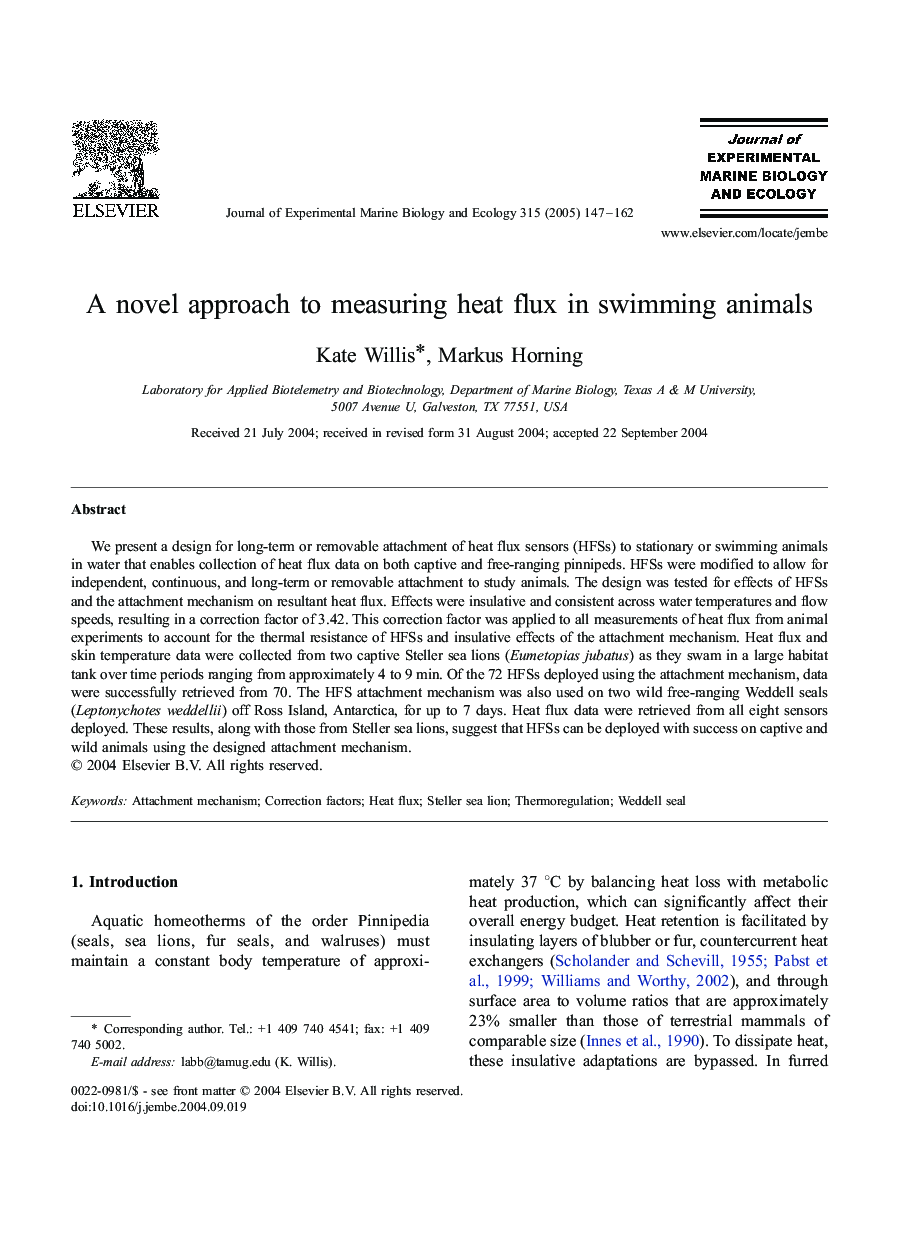| Article ID | Journal | Published Year | Pages | File Type |
|---|---|---|---|---|
| 9448877 | Journal of Experimental Marine Biology and Ecology | 2005 | 16 Pages |
Abstract
We present a design for long-term or removable attachment of heat flux sensors (HFSs) to stationary or swimming animals in water that enables collection of heat flux data on both captive and free-ranging pinnipeds. HFSs were modified to allow for independent, continuous, and long-term or removable attachment to study animals. The design was tested for effects of HFSs and the attachment mechanism on resultant heat flux. Effects were insulative and consistent across water temperatures and flow speeds, resulting in a correction factor of 3.42. This correction factor was applied to all measurements of heat flux from animal experiments to account for the thermal resistance of HFSs and insulative effects of the attachment mechanism. Heat flux and skin temperature data were collected from two captive Steller sea lions (Eumetopias jubatus) as they swam in a large habitat tank over time periods ranging from approximately 4 to 9 min. Of the 72 HFSs deployed using the attachment mechanism, data were successfully retrieved from 70. The HFS attachment mechanism was also used on two wild free-ranging Weddell seals (Leptonychotes weddellii) off Ross Island, Antarctica, for up to 7 days. Heat flux data were retrieved from all eight sensors deployed. These results, along with those from Steller sea lions, suggest that HFSs can be deployed with success on captive and wild animals using the designed attachment mechanism.
Related Topics
Life Sciences
Agricultural and Biological Sciences
Aquatic Science
Authors
Kate Willis, Markus Horning,
